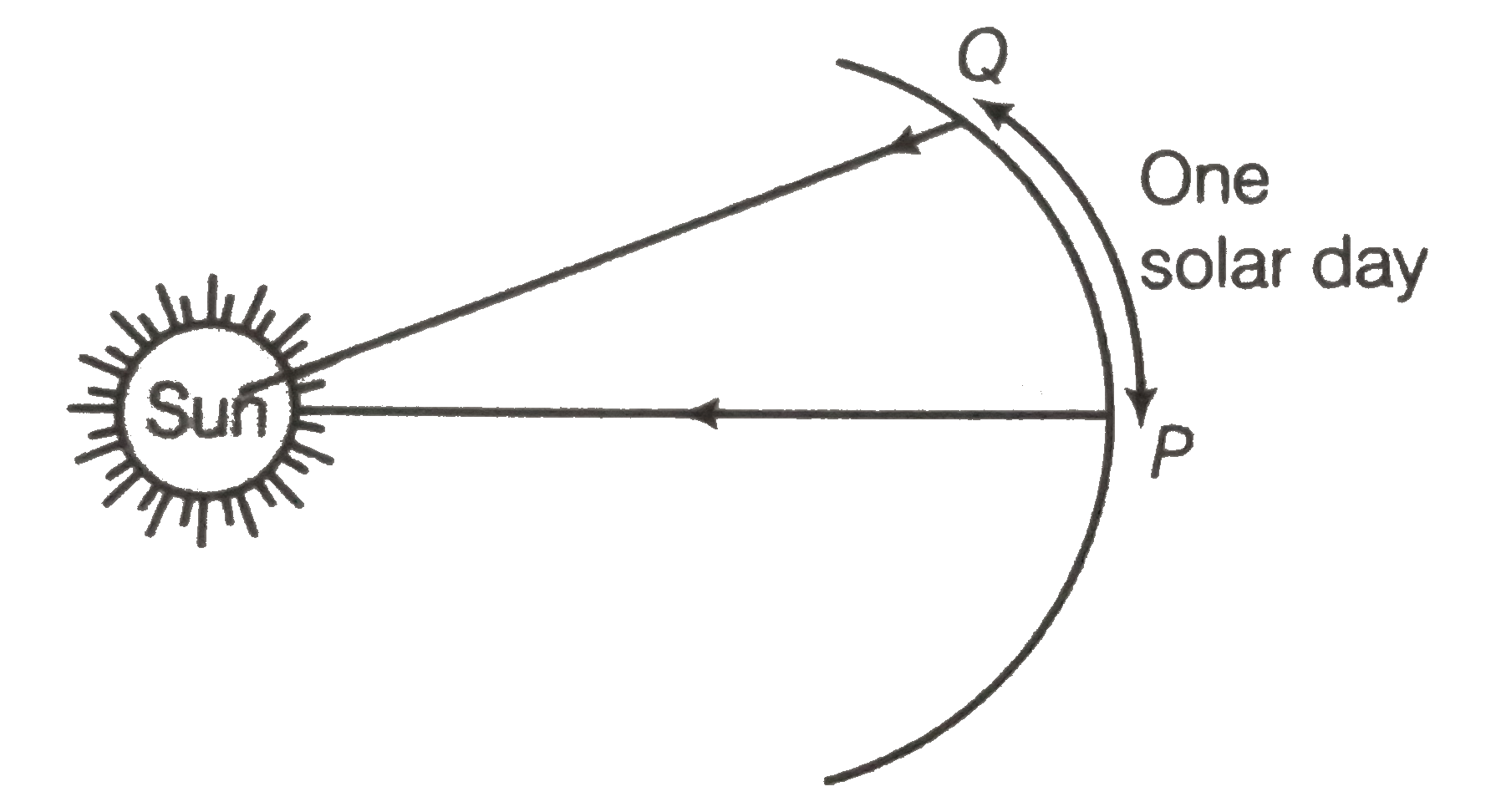Mean solar day is the time interval between two successive noon when sun passes through zenith point (meridian).
Sidereal day is the time interval between two successive transit of a distant star through the zenith point (meridian).
By drawing appropriate diagram showing the earth's spin and orbital motion, show that mean solar day is 4 min longer than the sidereal day. In other words, distant stars would rise 4 min early every successive day.
Video Solution
Text Solution
Consider the diagram below, the earth moves from the point P to Q in one solar day.

Every day the earth advances in the orbit by approximately . Then, it will have to rotate by (which we define as 1 day) to have the sun at zenith point again.
corresponds to 24 h.
corresponds to
Hence, distant stars would rise 4 min early every successive day.
|
Updated on:21/07/2023
Topper's Solved these Questions
- BOOK - NCERT EXEMPLARCHAPTER - GRAVITATIONEXERCISE - Long Answer type question5videos
GRAVITATION
- BOOK - NCERT EXEMPLARCHAPTER - GRAVITATIONEXERCISE - Very short Answer type question11videos
GRAVITATION
- BOOK - NCERT EXEMPLARCHAPTER - KINETIC THEORYEXERCISE - Multiple Choice Questions (MCQs)31videos
KINETIC THEORY
Similar Questions
Knowledge Check
- Question 1 - Select One
The time interval between two successive noon when sun passes through zenith point ( meridian ) is known as
Asidereal dayBmean solar dayCsolar yearDlunar month - Question 2 - Select One
Interval between two successive cell divisions is called
ACell-cycleBInterphaseCS-phaseDInterkinesis - Question 3 - Select One
The average time interval between two successive collisions of electrons with the vibrating atom is
Aperiodic timeBrelaxation timeCmean timeDnone of these
A travelling wave passes a point of observation. At this point, the time interval between successive crests is 0.2 seconds and
View SolutionA travelling wave passes a point of observation. At this point, the time interval between successive crests is 0.2 seconds and
View SolutionWhat is the relationship between solar day and sidereal day?
View SolutionThe difference in the lengths of a mean solar day and a sidereal day is about
View SolutionThe time interval between two successive primary and secondary tides at a place is more than 12 hours because ________
View Solution
